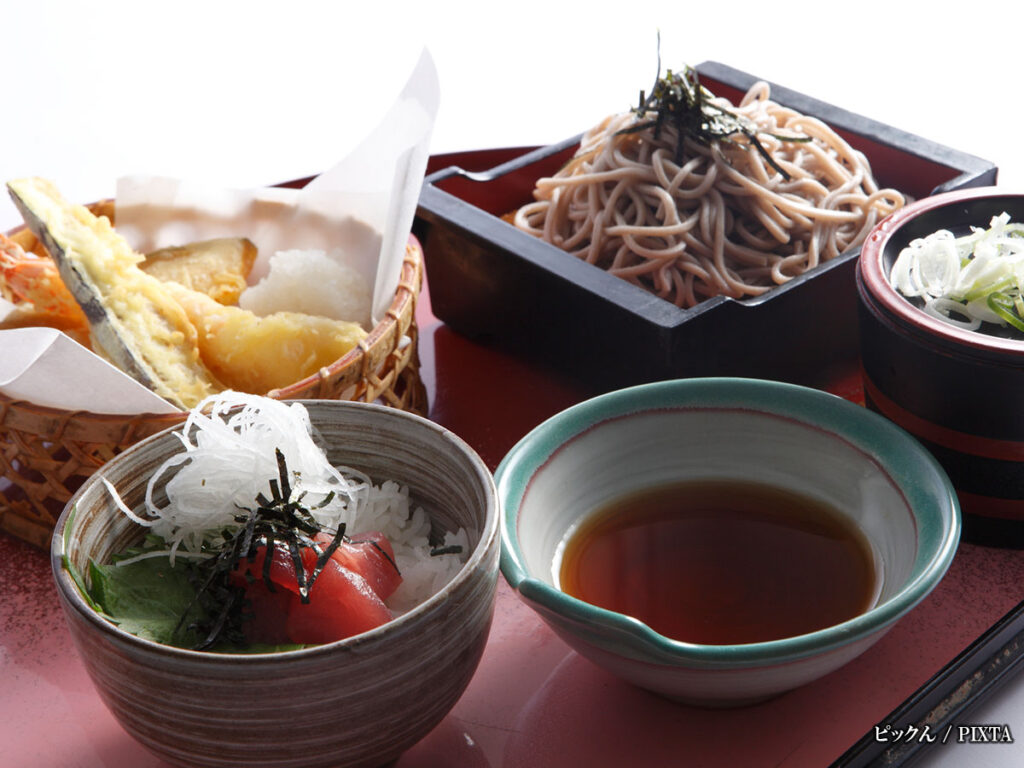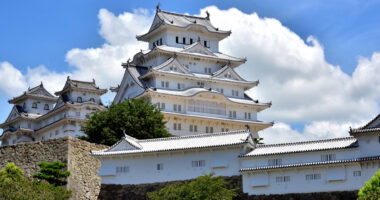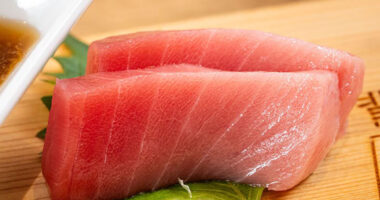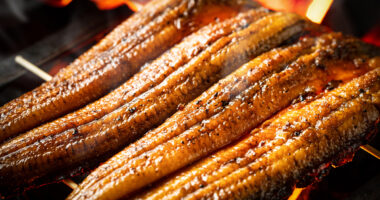For everyone visiting Japan, experiencing the food culture is surely one of the most anticipated elements of the trip. Japanese food offers a cultural experience that goes beyond mere sustenance. From delicate dishes that reflect the changing of the four seasons to the distinct local cuisine of each region, Japan’s food culture is surprisingly diverse and profound. In this article, we will introduce classic dishes that you should definitely try when visiting Japan, along with their unique charms and cultural backgrounds. Through Japanese food, please savor the rich culture and traditions of this country to the fullest.
The basic features and charms of Japanese food culture
Japan’s food culture has developed based on a unique set of values and aesthetics cultivated over a long history. At its foundation lies a mindset that emphasizes harmony with nature and cherishes the original flavors of the ingredients.
Emphasis on seasonality to feel the four seasons
One of the most significant features of Japanese cuisine is the expression of seasonality through the use of seasonal ingredients. In spring, you’ll find cherry blossoms and bamboo shoots; in summer, sweetfish and eggplant; in autumn, matsutake mushrooms and chestnuts; and in winter, crab and daikon radish. The finest seasonal ingredients are used in each period. This sense of season is reflected not only in the choice of ingredients but also in the color of the dishes, the selection of tableware, and the presentation. For example, Japanese sweets shaped like cherry blossom petals appear in spring, while dishes with hues reminiscent of autumn leaves adorn the table in the fall.
Focus on freshness and regional ingredients
As an island nation surrounded by the sea with many mountainous areas, Japan is blessed with an abundance of both seafood and mountain produce. A wide variety of ingredients, including fresh seafood, vegetables, and high-quality rice, forms the foundation of Japanese cuisine. Furthermore, each region has its own characteristic ingredients and local dishes, leading to the development of a richly diverse food culture, from the seafood of Hokkaidō to the unique cuisine of Okinawa. This regionality is one of the greatest pleasures of traveling throughout Japan.
Delicate cooking techniques and flavoring
The cooking methods in Japanese cuisine are extremely delicate, with a strong emphasis on bringing out the natural flavors of the ingredients. A variety of techniques such as simmering, steaming, grilling, frying, and eating raw are skillfully combined to create dishes. Light, well-balanced seasoning that respects the flavor of the ingredients is a major characteristic of Japanese cuisine. This subtlety is supported by a culture of dashi (soup stock), where stock made from ingredients like kombu (kelp) or katsuobushi (dried bonito flakes) forms the flavor base of the entire dish.
Unique Japanese dining styles and culture
A meal in Japan involves not just savoring the food but also unique cultural practices and manners. Understanding these will allow for a deeper experience of Japan’s food culture.
The basic structure of ichijū-sansai
The concept of ichijū-sansai (one soup, three sides) refers to a meal style consisting of a staple food (rice), a soup (like miso soup), a main dish, and side dishes. This structure is designed for nutritional balance and is considered the fundamental meal format that forms the core of Japanese food culture. The main dish often features fish or meat, while the side dishes use vegetables or tofu, creating a well-rounded meal. Miso soup is an indispensable part of the Japanese table and is made with a variety of ingredients.
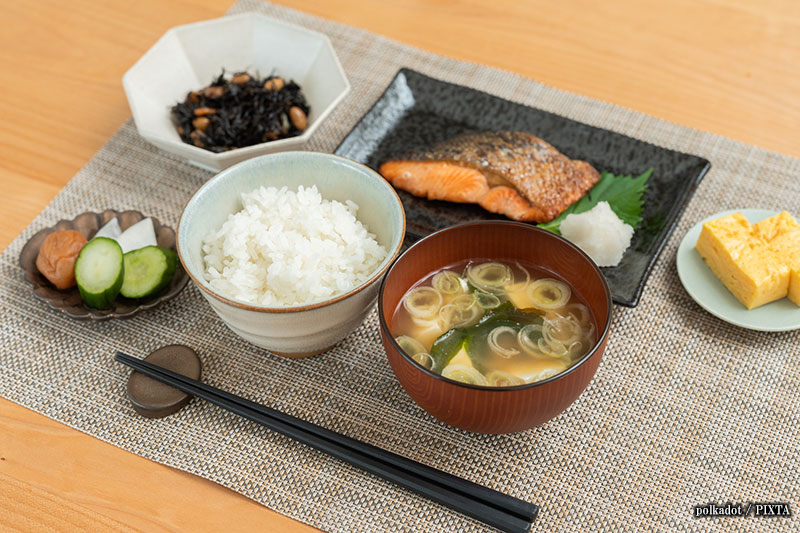
Photo for illustrative purposes
The importance of dashi culture
The flavor foundation of Japanese cuisine is dashi. The umami components extracted from ingredients like kombu, katsuobushi, niboshi (dried sardines), and shiitake mushrooms support the overall taste of a dish. Dashi is the “secret ingredient” of Japanese cooking, an essential element that creates a delicate and refined flavor. It is used in many Japanese dishes, such as miso soup, simmered dishes, and chawanmushi (savory egg custard). Understanding this culture allows one to feel the depth of Japanese cuisine more profoundly.
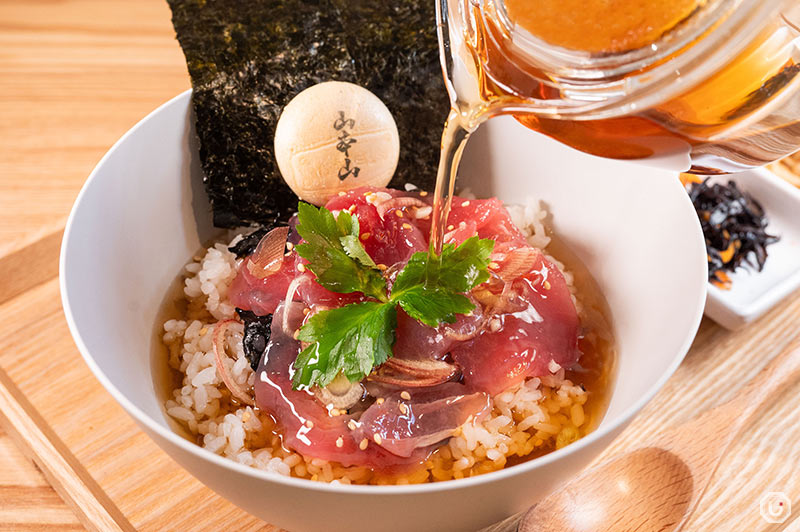
Dashi poured on rice and marinated tuna at Ochazuke Onigiri Yamamotoyama
Dining etiquette and cultural meaning
In Japan, people say itadakimasu (literally, “I take”) before a meal and gochisōsama (literally, “It was a treat”) after. These phrases express gratitude for the ingredients and to the person who prepared the meal. While there are detailed manners, such as how to use chopsticks and hold bowls, these are also cultural expressions of respect for others through the act of dining. A meal is positioned not just as a time for nourishment but as a precious time for deepening communication with family and friends.
Distinctive regional cuisine and traditional Japanese food culture
Across Japan, there are unique local dishes that make use of the climate and ingredients of the land. By tasting these dishes, you can truly feel the diversity and cultural richness of Japan.
The konamono culture of the Kansai region
The Kansai region, centered around Ōsaka, is famous for its konamono culture (flour-based dishes). Okonomiyaki and takoyaki are beloved as casual, popular dishes made with flour. Okonomiyaki is a savory pancake made with flour batter, vegetables, meat, and seafood, with ingredients and cooking styles varying by region. Takoyaki is a signature dish of Osaka, characterized by its round shape, cooked in a special cast-iron pan. These dishes can be said to represent the friendly and approachable culture of the people of Kansai.
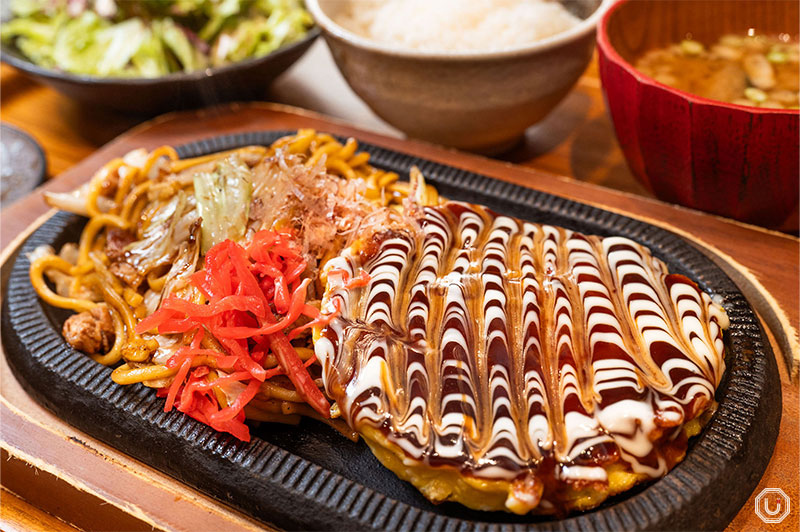
Okonomiyaki and fried noodle set at ŌSAKA Kitchen TOKYU PLAZA SHIBUYA in Tokyo
The diversity of noodle culture – udon and soba
Japan’s noodle culture is incredibly diverse, with udon and soba being the two most representative types. Udon are thick noodles made from wheat flour, with Sanuki udon from Kagawa Prefecture being particularly famous. Soba are noodles made from buckwheat, with Nagano and Yamagata prefectures known as major producers. In the Kantō region, a dark soy sauce-based broth is common, while in Kansai, a light soy sauce and kombu dashi broth is typical, allowing you to enjoy regional flavor differences. Noodles also have cultural significance, with practices like eating toshikoshi soba (year-end soba) tied to Japanese annual events.
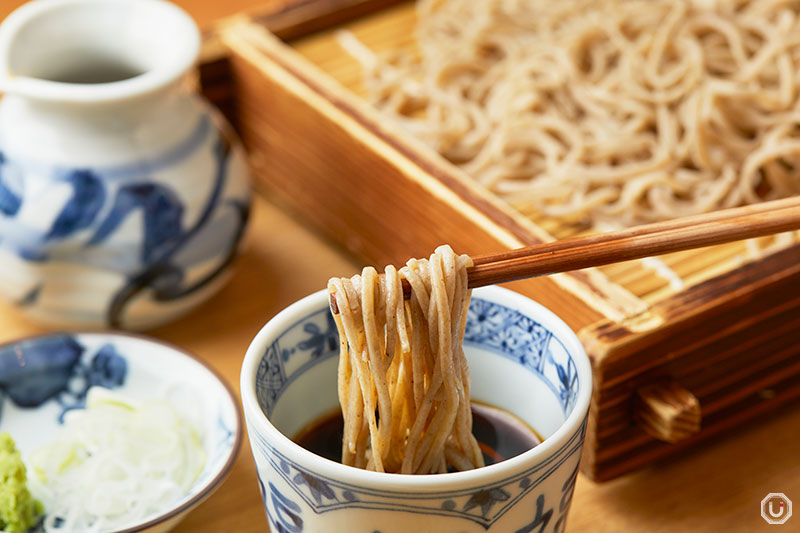
Soba at Teuchi Soba Keyaki in Roppongi, Tokyo
Rich fermented foods
Japan is a treasure trove of fermented foods, with various items like nattō (fermented soybeans), tsukemono (pickles), miso, and soy sauce eaten daily. These foods are known for their long shelf life and excellent nutritional value. Nattō is a food made from fermented soybeans; despite its distinctive smell and sticky texture, it is a breakfast staple loved by many Japanese people. Tsukemono are preserved vegetables pickled in salt or rice bran, and they can be enjoyed in a rich variety of forms. These fermented foods can be described as the crystallization of wisdom that has adapted to Japan’s climate and lifestyle.
Kaiseki ryōri and omotenashi
Kaiseki ryōri is a traditional multi-course Japanese meal where a series of small, seasonal dishes are beautifully presented to showcase the natural flavors of the ingredients. Characterized by its formality and artistry, it is deeply connected to the tea ceremony culture, as it was often served in that context. It is an artistic cuisine that embodies seasonality, a sense of beauty, and a spirit of omotenashi (hospitality).
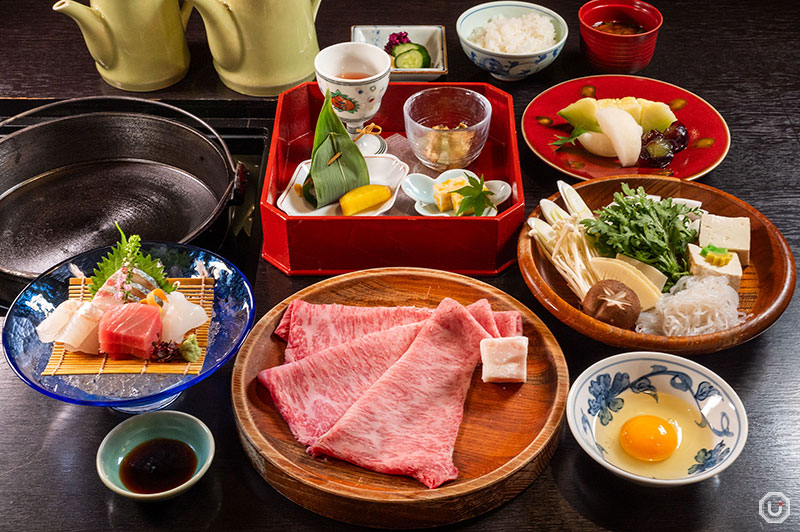
A kaiseki meal featuring premium wagyu at Kioichō Kichiza in Tokyo
A deep connection with the tea ceremony
Kaiseki ryori is said to have originated as a light meal served before a tea ceremony. To enhance the flavor of the tea, the dishes are lightly seasoned and served in modest portions. Based on the spirit of ichigo ichie (a once-in-a-lifetime encounter), the meal is composed of the best ingredients available on that specific day, with a great emphasis on seasonality. A strong aesthetic is poured into every detail, from the choice of tableware to the presentation, making visual beauty an essential component.
Seasonal ingredients and the expression of the seasons
Using the most delicious seasonal ingredients of the moment is fundamental to kaiseki ryori. Ingredients that represent the season, such as mountain vegetables in spring, sweetfish in summer, matsutake mushrooms in autumn, and crab in winter, become the stars of the meal. Seasonality is also expressed in the names and presentation of the dishes, allowing one to experience the Japanese people’s delicate sensibility towards nature through the cuisine. For example, an autumn kaiseki might feature decorative carrots carved to resemble maple leaves or presentations using persimmon leaves.
The spirit of omotenashi
Kaiseki ryori is imbued with a spirit of omotenashi. The chef thinks of the guests and strives to provide the most suitable dishes for them. This spirit of omotenashi is a core part of Japanese culture, and its essence can be understood through the experience of kaiseki ryōri. The temperature of the food, the order of serving, and the harmony with the tableware are all meticulously calculated, resulting in a dining experience that is like a work of art.
Classic dishes you must try on your visit to Japan
There are countless dishes we’d like you to experience when you visit Japan, but here we will introduce some of the most representative and approachable ones. These dishes are perfect for understanding the essence of Japanese food culture.
Sushi – Japan’s globally renowned dish
Sushi is undoubtedly one of Japan’s most famous dishes. While nigiri-zushi (hand-pressed sushi) with fresh seafood on top of vinegared rice is the most common, there are various types, including rolled sushi and chirashi-zushi (vinegared rice with colorful ingredients scattered on top). The charm of sushi lies in its simple yet profound flavor, a fusion of the freshness of the fish and the skill of the artisan. You can savor authentic sushi in areas like Tokyo’s Tsukiji and Toyosu or Osaka’s Kuromon Market, and you can also casually enjoy many varieties at conveyor belt sushi restaurants.
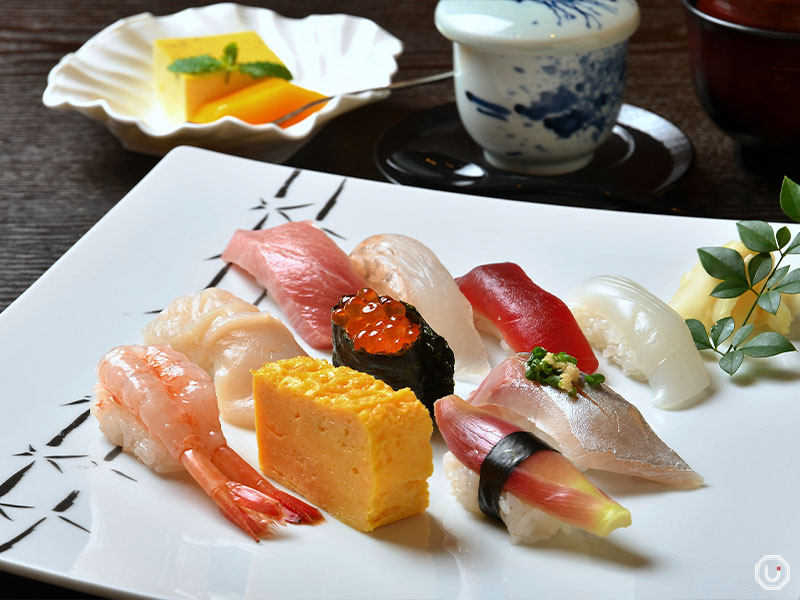
Nigiri set at Tsukiji Sushiiwa Tsukijishiten in Tokyo
Tempura – A fried dish loved since the Edo period
Tempura is a dish of seafood and vegetables coated in a light batter and deep-fried, beloved by the common people since the Edo period. You can enjoy the crispy, light texture and the umami of the ingredients inside. There is a wide variety, including shrimp, mixed-ingredient fritters, and vegetable tempura, and it is typically enjoyed with a dipping sauce or salt. At specialty restaurants, you can savor piping hot tempura fried by a chef right in front of you and be amazed by their high level of skill.
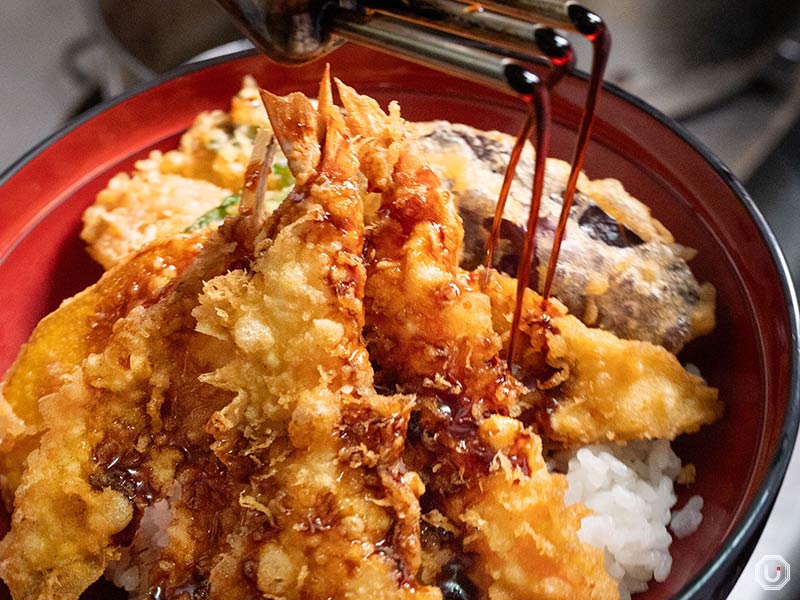
Shrimp tempura at Tempura Hisago Akihabara UDX in Tokyo
Ramen – A noodle dish with rich regional variations
Ramen is a noodle dish that originated in China and underwent its own unique development in Japan. There are various soups, such as soy sauce, miso, salt, and pork bone, and you can enjoy distinct flavors depending on the region. You can experience different tastes in each region, such as Sapporo’s miso ramen, Hakata’s tonkotsu ramen, and Tokyo’s shōyu ramen. Many shops are open late at night, making it a popular dish where you can feel Japan’s casual food culture.
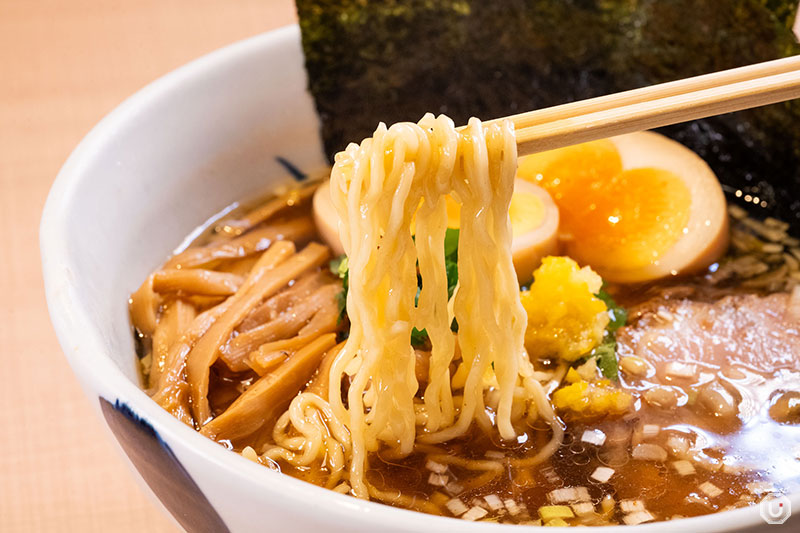
Ramen at Asakusa Nadai Ramen Yoroiya in Tokyo
Sukiyaki – Japan’s representative beef dish
Sukiyaki is a representative Japanese hot pot dish centered around beef. The traditional style involves simmering beef and vegetables in a sweet and savory broth and dipping them in raw egg before eating. The cooking methods differ between the Kantō (Eastern) and Kansai (Western) styles, and you can enjoy the different flavors of each. Sukiyaki made with high-grade wagyū beef is a dish that allows you to truly appreciate the quality of Japanese ingredients and is loved by many tourists visiting Japan.
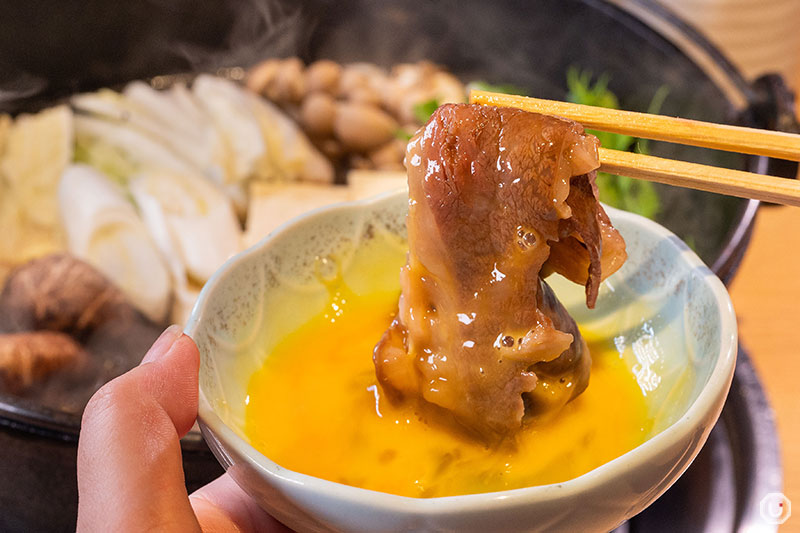
Sukiyaki at Shabu-shabu Sushi Hassan in Roppongi, Tokyo
The evolution and global reputation of modern Japanese food culture
In modern Japan, a diverse food culture is developing, incorporating culinary cultures from around the world while being based on traditional food culture. This flexibility is one of the greatest charms of Japanese cuisine.
The global reputation of washoku, traditional Japanese cuisine, and its UNESCO registration
In 2013, “Washoku: Traditional Dietary Cultures of the Japanese,” was registered as a UNESCO Intangible Cultural Heritage. This recognition was not for the cuisine itself, but for Japan’s entire food culture. The nutritional balance of ichiju-sansai, the emphasis on seasonality, the connection with annual events, and the expression of natural beauty were highly praised. With this registration, the value of washoku was recognized globally, and it has garnered attention as a healthy and sustainable food culture.
Health consciousness and nutritional balance
Japanese cuisine is recognized worldwide as a healthy diet. A well-balanced nutritional intake is made possible through seafood-centric proteins, abundant vegetables, and the use of fermented foods. Furthermore, the diversity of ingredients and the variety of cooking methods make it possible to maintain a healthy diet without getting bored.
The inheritance and innovation of food culture
In modern Japan, while traditional food culture is being passed down, innovative dishes incorporating new elements are also being created. New genres like fusion cuisine and creative Japanese dishes, which combine Japanese techniques with global ingredients and methods, have been established. This balance of inheritance and innovation is surely one of the reasons why Japanese food culture continues to be loved around the world. The attitude of valuing tradition while not being afraid of change supports the sustainable development of Japan’s food culture.
Summary
Japanese food offers a rich cultural experience that goes beyond mere sustenance. By understanding the unique characteristics of Japanese food culture—such as the sense of seasonality, the delicate cooking techniques that bring out the natural flavors of ingredients, and the balanced composition of ichiju-sansai—you will be able to appreciate its flavors more deeply.
From classic dishes like sushi, tempura, and ramen to regional specialties and artistic meals like kaiseki ryōri, a diverse food culture exists in Japan. All of these reflect the Japanese people’s view of nature, aesthetic sense, and spirit of hospitality cultivated over a long history.
We truly hope that all visitors to Japan will discover the country’s charms through these food cultures. Savoring the food while understanding its manners and cultural background will surely make your trip to Japan even more fulfilling. Japanese food is certain to transform your travels into an unforgettable, special experience.
